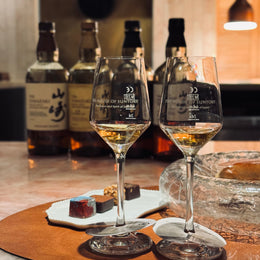
Coco: the Pixar movie that shook up both the animation and movie industry back in 2017. This box office blockbuster was not only celebrated for its powerful storytelling, sublime visuals and catchy songs, but its clear depiction of the Mexican culture and tradition has been applauded by many not just in the United States, but all over the world. The tale unfolds in an unspecified Mexican town on the eve of El Día de los Muertos (the Day of the Dead) as the entire community is preparing to honour their departed loved ones. We follow a boy, Miguel, who navigates the land of the dead in hopes to return to the land of the living.
To many, especially outside of the Latin Americas, Coco was the first introduction to the Mexican culture, specifically the
El Día de los Muertos. As per Tequila Stop’s mission to share the love for Mexico and Mexican culture, let us dive deeper into the Day of the Dead and the beauty of this tradition.
ORIGINS OF EL DÍA DE LOS MUERTOS
The roots of the Day of the Dead go back to 3000 years in pre-Columbian Mesoamerica. The Aztecs and the Nahua people living in what now is Central Mexico held a cyclical view of the universe, in that death is an integral, ever-present part of life. Rather than seeing it as an end, death was perceived as the start of another journey. Upon dying, one is believed to travel to Chicunamictlán, the Land of the Dead, where one has to undertake a four-year voyage and undergo nine challenging and dangerous levels to reach Mictlán, their final resting place.
As a form of honouring the dead and the arduous journey ahead of them, the families of the deceased will provide the necessary tools, food, and water. This Nahua ritual inspired the contemporary practice of placing foods and other ofrendas (offerings) on a loved one’s grave or setting them out on makeshift altars in their homes.

CELEBRATING THE DAY OF THE DEAD
El Día de los Muertos, despite being a tradition that features the deceased,it is still a celebration. It is regarded as a joyous occasion, wherein the living takes this time to remember and celebrate the departed. On this day, it is believed that the barrier between the spirit world and the real world would dissolve, allowing the souls of the dead to traverse to the world of the living and feast, drink, dance, and play music with their loved ones. The living family members would then treat the deceased as their honoured guests, providing the dead with offerings of different kinds.
These offerings have different symbolisms as well. Here are some of them:
Candles: helps to light the way home for the spirits.
Foods and Drinks: to sate the deceased’s hunger and quench their thirst after their long journey back home. Family members will often prepare the departed’s favourite foods and bring out alcoholic beverages like tequila.
Salt: this condiment is considered the spice of life, and one of the staples that are left at the altar.
Marigold: scents of marigold and burning copal are thought to be most developed by the spirits of the dead and invite them back home. They are also referred to as Flor de Muerto (Flower of the Dead) and symbolise the beauty and fragility of life - which makes it an apt flower for the tradition.
Red Cockscombs: in Mexican culture, the red cockscomb flower symbolises the blood of Christ and resurrection from the dead. Their long-lasting nature also makes it the apparent choice for the altar and tombstone decoration.
THE DAY OF THE DEAD CELEBRATION
Such festivities are never complete without parades - which are aplenty during El Día de los Muertos. These parades and processions typically feature representations of the character La Catrina (an elegantly-dressed female skeleton), frightful calacus (skeletons) and calaveras (skulls), and other icons of death and the underworld. Aside from the face painting, elaborate costumes and static displays of sculptures, dance and art will also be prevalent. Many revellers wear shells or other noisemakers to amp up the excitement and possibly rouse the dead and keep them close during the fun.
In fact, these motifs are so entrenched in Mexican culture as a whole that they are incorporated into products, brand conceptualisation and the like, regardless of whether they are tied to the festival or otherwise. For instance, take a look at the exquisite representation of La Catrina on the La Cofradia Edition Catrina.
CELEBRATING EL DÍA DE LOS MUERTOS
Thanks to recognition by UNESCO and the global sharing of information, El Día de los Muertos has become increasingly popular - both in Mexico and abroad. Unfortunately, this tradition has yet to be celebrated in Singapore due to the small Mexican community in this tiny red dot. However, the beauty of this ritual is one that can be appreciated and replicated by anyone and everyone - the beauty of family, community, sense of tradition and remembrance.
This feature is brought to you by Tequila Stop and the International Tequila Academy.
Tequila Stop aims to share is love for Mexico and its beloved Spirit with fans in Asia Pacific, bringing fans the best that Tequila has to offer, through an extensive catalogue of premium Tequilas and Mezcals straight from the source. Tequila Stop works closely with Mezcaleros across Mexico, and is also partners with the International Tequila Academy.








